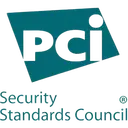Recently, Thoropass’s Senior Product Managers, Annie Gregory, and Rebecca Houser, sat down to discuss how automation has impacted the world of compliance. Annie has spent many years as a product manager in the compliance automation space after being exposed to it in the e-commerce field. Rebecca comes from the advertising technology and HealthTech space but found her passion in compliance automation software after going through a SOC 2 Type 2 audit in 2016 and realizing that the pain points of manual auditing could be avoided with automated software.
Annie and Rebecca discussed how automation can improve overall transparency and efficiency in the audit process and offer more value to customers.
Watch the full discussion below.
Automation for customers
Automating processes in software has its perks. For example, automating compliance gives companies and customers time back after manually completing tasks for years. It also helps companies streamline the audit process as adding a layer of automation on top of expert guidance helps companies quickly get and stay compliant so their customers know their data is secured.
Automation is crucial and where it’s really helped to reduce the risk of just day-to-day business emergencies from actually causing data to be at more risk and also has helped to reduce the amount of work once you get to a checkpoint because things should be in a much better state
Annie Gregory
Senior Product Manager
Thoropass
Blind spots exist and put companies at risk and, in turn, put customers’ data at risk. With automation, you have more transparency in a system at all times. If you’re monitoring for specific items that are higher risk, then that information can surface sooner in the audit preparation process rather than catching it only when you get to audit. There are not enough people worldwide to continuously check data, but automation can do it for you as it provides a more controlled environment with less human error and monitor around the clock.
The efficiency of automating compliance
A lot of times, the auditing and compliance process can take up a ton of time. And, if it’s taking up that time from someone when that’s not their specialized area, then it’s not effective or efficient.
Automation can catch if a non-compliant system has been released in a production environment. And the earlier you catch that, the fewer downstream costs there will be in development. Continuing compliance is critical; if you don’t revisit these things continuously, you continue to build that technical debt.
Compliance flow also plays a part in efficiency. The flow should be one where your controls are relevant and tailored to your business.
Additionally, having a partner or someone on the team to answer your questions is vital so they can build a tailored program for your specific needs. Having a bespoke compliance program makes it easier to maintain, more efficient for your business, and more relevant for you.
The value of automating compliance
Many times, customers do not want to reinvent the wheel. Automation should assist and streamline processes, especially when it comes to auditing automation, which is about helping customers save time and money. By prioritizing the applications, integrations, and automation that save the most time and manual work, it adds the most value to the customer.
Automation offers more control over the entire process-from readiness through to audit. Additionally, it offers the ability to customize an automation program to suit your specific needs and timeline.
At Thoropass, our auditors are constantly surfacing the most valuable systems to automate so we can build that into the product to provide as seamless an experience as possible. Having the auditor in the loop from Day 1 saves time for design and is a key differentiator when it comes to the quality and transparency customers get with Thoropass’s Seamless Audit offering.
It is a seamless experience. Here are the activities you have to do, here’s the order in which we recommend you do them for the most ease for your company, and here’s how we think it applies to your specific context and business and data.
It removes our customers from having to think about making those decisions on their own, and they follow this intuitive path, which results and have that result in a successful, easy audit.
Rebecca Houser
Senior Product Manager
Thoropass
Are you thinking about automating your compliance program?
Talk to our experts to learn more about the resources and support we provide when creating a compliance program that tailors to your business needs.
Get the Guide
Founder’s Guide to Security and Compliance
Take security one step further, find out which frameworks are best for your business.

Related Posts
Stay connected
Subscribe to receive new blog articles and updates from Thoropass in your inbox.
Want to join our team?
Help Thoropass ensure that compliance never gets in the way of innovation.
















.png)